Old Fort
Houses within 5km of this house
Displaying 22 houses.
Houses within 5km of Old Fort
Displaying 22 houses.
| House name | Description | |
|---|---|---|
| Kilcondy | Kilcondy was occupied by William Davies, medical doctor, in 1837 and by John F. Beale at the time of Griffith's Valuation. Beale held the property from Richard Rye and the buildings were valued at £18+. The Crooke sale rental of 1860 records the leasing of 97 acres of Kilcondy including the dwelling house to Richard Browne Crooke by Richard Tonson Rye in 1840 for 3 lives. John Fleming Beale is given as the tenant. Earlier, in 1786, Wilson refers to Kilcondie as the seat of Mr. Crooke. It is now a ruin. | |
| Ballytrasna | Located on the Earl of Bandon's estate, occupied by the Reverend B. Gash in 1837 and by Thomas Neville in the early 1850s when the house was valued at £10. The location of this house now appears to be under water. | |
| Lissardagh | The residence of William Baldwin at the time of Griffith's Valuation, held by him in fee and valued at £20. There is still a house extant at this location. |
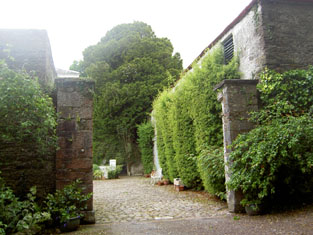
|
| Coolalta | This house was the residence of the Reverend Pierce Green PP in 1837. It is named Coolalta Cottage on the first Ordnance Survey map and Coolalta on the later 25-inch edition of the 1890s. Occupied by Frederick Arden, valued at £13+ and held from Thomas Crooke at the time of Griffith's Valuation. A house is still extant at the site. | |
| Oak Grove | Home of the Bowen family, occupied by Mrs Bowen in 1814, by J. Bowen in 1837 and by John Bowen in the early 1850s when it was valued at £28 and held in fee. The National Inventory of Architectural Heritage states that parts of the property were rebuilt c.1930 following the burning of the original house in June 1920. In the early 1940s the Irish Tourist Authority noted that it had been lived in by some years by a well-known actress, "Miss Lilly-Elsie" who was married to Major Ian Bullough. It is now known as Oakpark House. |
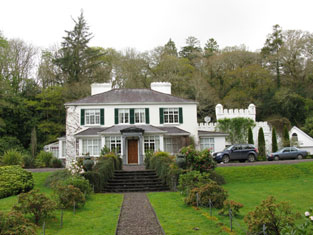
|
| Shandangan House | Smith records Christopher Earbury as resident at Shandangan in 1750. Devonsher Esq was the proprietor of Shandangan in the 1770s and 1780s. A Mr Timothy Mahony was living at Shandangan, Macroom in 1814. Lewis records S. Penrose as the proprietor of Shandangan (parish of Kilmurry) in 1837 and Samuel Penrose was still occupying the house at the time of Griffith's Valuation. He held it in fee and it was valued at £13.10 shillings. | |
| Forest House | In 1750 William Spread was living at Forest and in the 1770s and 1780s Spread Esq is recorded as resident at Forest. In 1814 Leet records this "seat" as unoccupied. T. Gollock was resident in 1837 and Thomas Gollock held the property in fee at the time of Griffith's Valuation when it was valued at £38. Slater records it as the seat of Rev. T.H. Gollock in 1894. Forest was burnt in July 1921 just before the end of the War of Independence when it was the property of James Gollock and occupied by Lt. Col. Isaac Burns-Ludlow. The Irish Tourist Association survey refers to this in the 1940s as it having been burnt "as a military precaution". It is no longer extant. | |
| Upper Forest | A house valued at £20.10 shillings at the time of Griffith's Valuation, held by John Hassett from Thomas Gollock. It is still extant and occupied. |
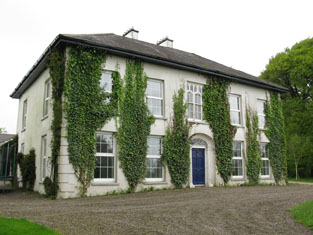
|
| Leemount | Leemount was the home of Thomas Coppinger in 1814 and of Thomas Gollock in 1837. In the early 1850s this house was occupied by Thomas H. Broderick, valued at £30, and held from Thomas Gollock. In 1894 Slater refers to it as the residence of Albert Beamish. Leemount is recorded as one of the residences of John Lindsay, eldest son of George Crawford Lindsay of Moorlands, county Down in Walfords (1910). This original house was burnt in March 1921 during the War of Independence when it was the residence of Maria Lindsay, later executed as an informer by the IRA. It was replaced by the existing house. |

|
| Carhue/Carhoo | A Coppinger family home, occupied by John Rye Coppinger in 1814 and 1837 and by Henry J. Coppinger in the early 1850s. Henry J. Coppinger held the property in fee and it was valued at £18. The sale rental of 1856 states that the mansion house had recently been repaired and that Henry T. Coppinger was tenant under the Court of Chancery. A lithograph of the house and demesne is included. Burkes (1904) records George Colthurst (born 1811) of Carhue House. John Good was residing in this house in the mid 1870s. In 1894 Slater refers to it as the seat of John H. Colthurst. Carhoo House is still extant. |
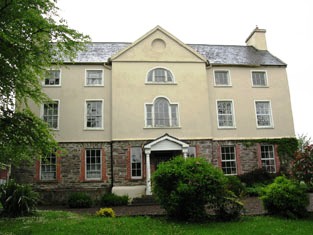
|
| Nadrid | A house occupied at the beginning of the 19th century by Joseph Woodley, who married Anne Baldwin in 1799 but died a few years later. By 1814 Samuel Galway was residing at Nadrid. In 1837 Henry O'Callaghan was the occupier and he was still resident at the time of Griffith's Valuation. He held the house valued at £42 from the representatives of Abraham Cross. The Irish Tourist Association survey of the 1940s refers to Nadrid as the residence of Captain Matthews. A house still remains at the site. |

|
| Upper Forest | Occupied by John Hassett at the time of Griffith's Valuation and held from Thomas Gollock. The house was valued at £20+. The representatives of John Hassett still lived at Forest in the 1870s. | |
| Nettleville | The home of the Nettles family in the 19th century, valued at £35 in the 1850s. Occupied by the Reverend Basil Orpin in 1814. This house was still in Nettles occupation in 1906 but is now a ruin. |

|
| Killinardrish House | Lewis describes this house as a "elegant Italian lodge lately built by R. J. O’Donoghue". It was valued at £38 and held from Sir Augustus Warren. In 1944 the Irish Tourist Association Survey noted that it was the residence of Mr. O'Donovan, manager of the creamery at Lissarda. Killinadrish is still extant. There was also a steward's house in this townland occupied by members of the Crooke family. |
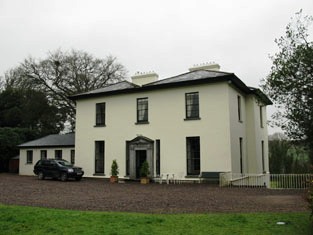
|
| Green Lodge | Occupied by R. Coppinger in 1837 and by Anne Coppinger at the time of Griffith's Valuation and held by her in fee. The buildings were valued at £15.10 shillings. The sale rental of 1868 records the leasing of this property by George Lombard to Thomas Stephen Coppinger in 1789 for 999 years and the leasing of the Coppinger interest to Charles Manning in 1860 for 600 years. The Irish Tourist Association survey notes that it was built by the Coppinger family, "one of whose members turned Protestant to save the estate". It is no longer extant. | |
| Nadrid | Daniel Connor held a house in the townland of Nadrid valued at £31+ from the representatives of Abraham Cross. This may be the house known as Riversdale marked on the first Ordnance Map. In 1894 Slater refers to Nadrid House as the residence of William O'Sullivan Galgey. A house still exists at the site. | |
| Classas | A house occupied by H. Minhear in 1837 and by Lewis Gollock at the time of Griffith's Valuation when it was valued at £26 and held from William Crooke. In 1894 Slater notes it as the seat of A. McCall. In the 1940s the Irish Tourist Association survey noted that it was then being run by Mrs. Agnes Leader as a guesthouse "for relatives". It is still extant and occupied. |
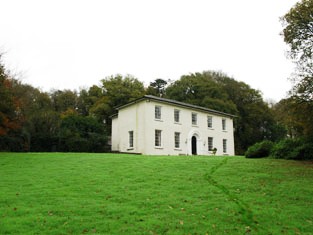
|
| Ryecourt | Seat of the Rye family in the 18th, 19th and 20th centuries, In 1786 Wilson refers to it as the seat of Colonel Rye. Lewis writes in 1837 that “the plantations around Rye Court are very extensive and beautiful”. The buildings were valued at £66 in the early 1850s. Ryecourt was burnt in June 1921 during the War of Independence. The family built a smaller house in the garden and continued in residence at Ryecourt into the 1970s. Ryecourt House was demolished but some of the farmyard complex remains. |

|
| Crookstown | Smith records Mr Crook of Crookstown in 1751. The mother of Robert Warren, 1st Baronet, was Anne Crooke and this house may have got its name from her. It was the home of a branch of the Warren family from the late 18th century, occupied by the Reverend E. W. Warren in 1814, by the Reverend R. Warren in 1837 and in the early 1850s. The Reverend Robert Warren held the property in fee and the buildings were valued at £48. It was burnt in June 1921 during the War of Independence when it was the residence of Robert Warren. It is still extant and occupied. |
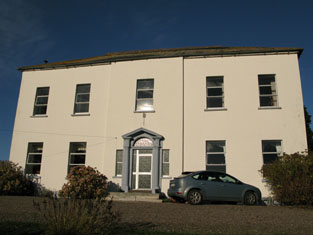
|
| Warrensgrove | This house was the home of John Borlase Warren who succeeded his brother Sir Augustus Warren as 4th Baronet. He is recorded as being resident in 1837 and at the time of Griffith's Valuation when he held the property from Sir A. Warren. The buildings were valued at £48. In the 1940s the Irish Tourist Association Survey noted that Warrensgrove had been burnt in 1921. The original house is now a ruin but buildings adjacent have been redeveloped as a country house. In 2014, the property, including the ruin, was offered for sale. |

|
| Bellmount | Bellmount, Innishannon was the residence of the Reverend James Crowley in 1814. T. Herrick was the proprietor of Bellmount in 1837 along with a large flour mill. The mill and house were in the possession of Patrick Howard at the time of Griffith's Valuation and held from John E. Herrick. The house was valued at £18 and the mill at £65. The mill building, though now disused, is still extant. |
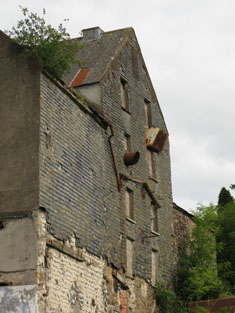
|
| Shandangan East | A house occupied by Patrick Hassett at the time of Griffith's Valuation held from Samuel Penrose and valued at £18.10 shillings. This property is labeled Larch Hill House on the 25-inch Ordnance Survey Map of the 1890s. It is still extant and occupied. |
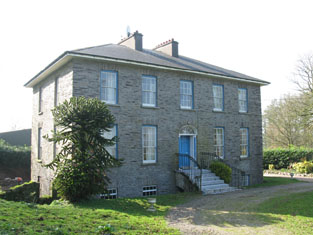
|

